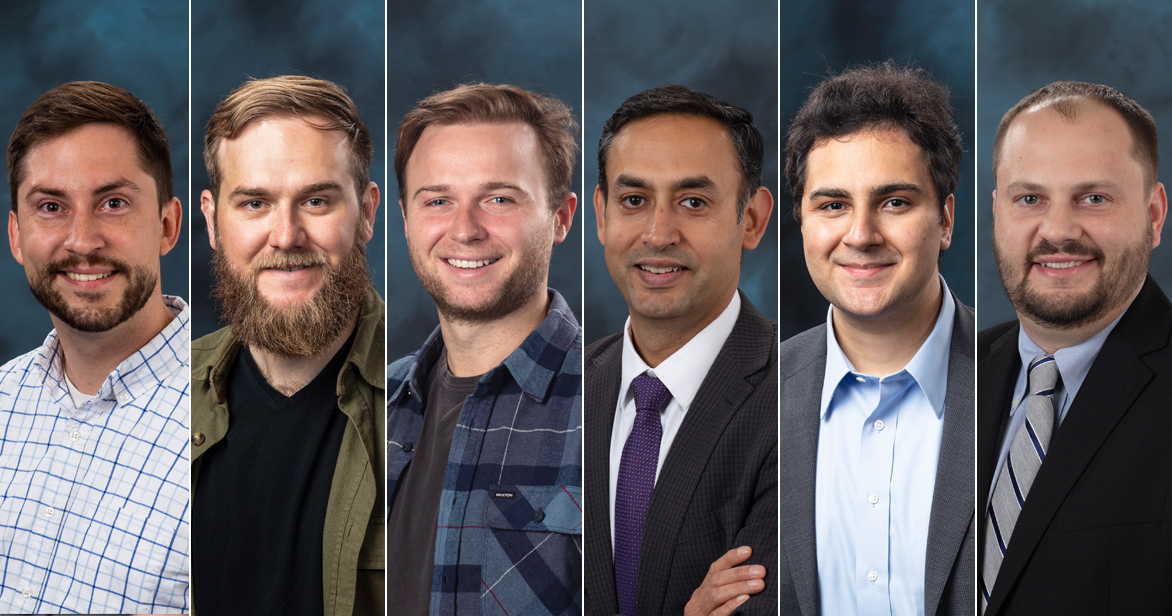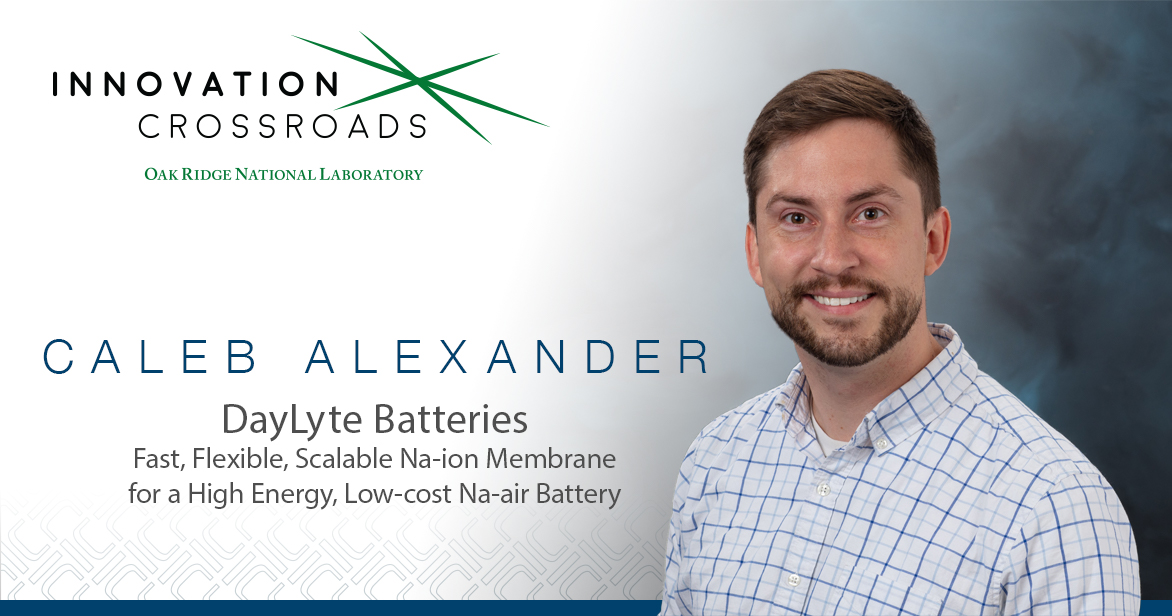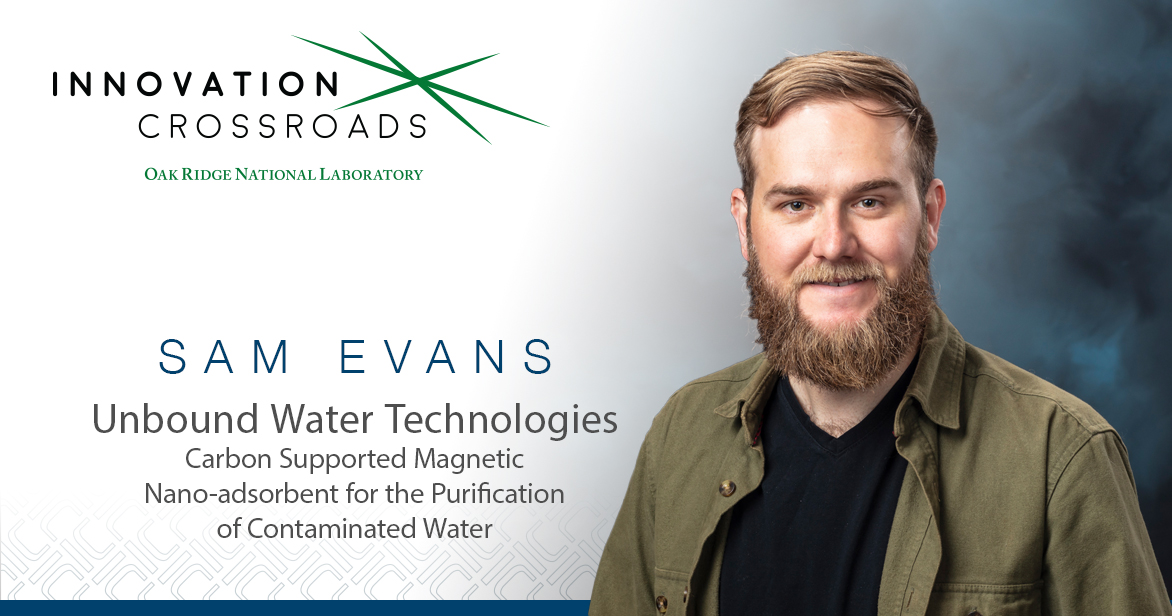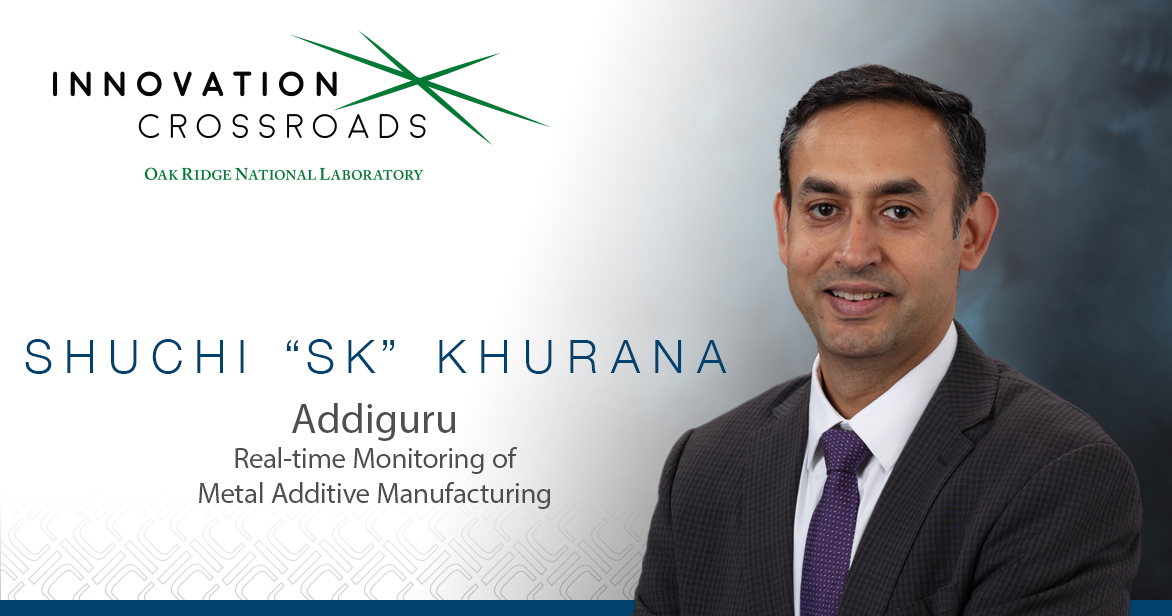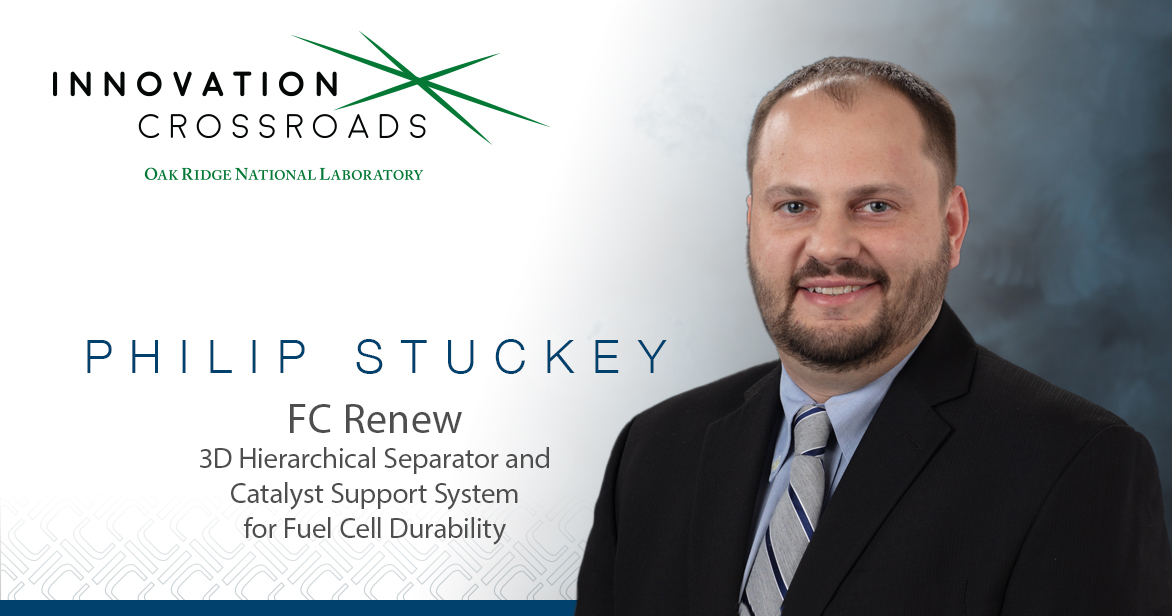Six science and technology innovators from across the United States will join the fifth cohort of Oak Ridge National Laboratory's Innovation Crossroads program in June. As the Southeast's only research and development program for entrepreneurs based at a U.S. Department of Energy national laboratory, Innovation Crossroads provides unique support to science-based startups to help advance game-changing technologies from the laboratory to the marketplace.
Innovation Crossroads is sponsored by DOE's Advanced Manufacturing Office.
New this year, DOE's Building Technologies Office is supporting an innovator in building energy efficiency research. The Tennessee Valley Authority once again joins as a program sponsor for the third year enabling an innovator focused on energy-related research.
The six innovators were selected through a merit-based process and will have the opportunity to advance technologies they aim to commercialize by working with world-class science experts and unique capabilities at ORNL. These include Summit, the nation's most powerful supercomputer; the Manufacturing Demonstration Facility, DOE's largest advanced manufacturing research center; the Building Technologies Research and Integration Center, DOE's only user facility dedicated to buildings research; and the Spallation Neutron Source, offering atomic-level insight into materials. The innovators will be partnered with a network of mentoring organizations in the Southeast to help develop business strategies to move their technology breakthroughs into the market.
The fifth Innovation Crossroads cohort of fellows and respective projects include:
Caleb Alexander: Sodium ion membrane for high energy, low-cost sodium-air battery
Alexander's aquaeous sodium-air battery can achieve the highest energy density possible while using low-cost elements like sodium, which is free to acquire as it's found in oceans. The sodium-air battery will allow industry to economically transition to solar and wind energy, while making electric vehicles affordable, same day drone delivery possible, and even electric aviation technically feasible. Manufacturing of the battery will use a novel roll-to-roll manufacturing process to create flexible, stable, fast conducting sodium-ion composite membranes with stable and active oxygen catalysts. Alexander holds a doctorate in chemical engineering from the University of Texas.
Sam Evans: Carbon supported magnetic nano-absorbent
Evans has developed a new water filtration process using waste tire-derived mesoporous carbon infiltrated with magnetic iron oxide nanoparticles to bind to contaminants in water and then be easily filtered out by magnets. By having the nanoparticles occupy the carbon's porous framework, they do not degrade from interaction with the surrounding air. Iron oxide nanoparticles give the material properties improved stability, increased magnetic response and enhanced adsorption. The combination of the carbon support and magnetic iron nanoparticles allows for a higher adsorption capacity of a wider range of toxic contaminants. Evans holds a doctorate in energy science and engineering from the University of Tennessee, Knoxville.
Tommy Gibbons: Energy-efficient, carbon-negative, bio-based insulation
Gibbons has developed hemp fiber insulation that is non-toxic, high-performing and carbon-negative to make. The hemp-based product can drastically reduce a building's carbon footprint while increasing the occupant's health and comfort. The fire resistant material also has the potential to achieve a high R-value, which denotes efficiency. Hemp-based insulation releases zero carbon and can be manufactured at a lower cost because the material can be sourced wholly in the U.S. Gibbons holds an undergraduate degree in public policy from Princeton University and is a certified green associate from the Leadership in Energy and Environmental Design.
Shuchi "SK" Khurana: Real-time monitoring of metal additive manufacturing
Khurana has created a platform for in-process monitoring of additive manufacturing, using an artificial intelligence model to determine defects based on images collected during the manufacturing process. By deploying a combination of infrared and near-infrared cameras, the accuracy of detected defects can be improved. The monitoring technology improves the efficiency of additive manufacturing and results in the production of higher quality components. It's anticipated to lead to an increase in the adoption of metal additive manufacturing for production-ready components. Khurana holds master's degrees in business administration and science from Ohio State University.
Forrest Shriver: Database construction using machine learning for cyber-attack detection
Shriver has developed a continuous, automatic learning system for building asset-specific operational databases. The technology performs collection and summarization of high-throughput data sources that remain robust under variable conditions, where the amount of data flowing in at one point in time may be significantly different in terms of volume and importance to the data flowing in at another point in time. The secure system also removes the need for manually supervised data collection and is anticipated to be scalable and deployable across diverse industries. Shriver holds a doctorate in nuclear engineering from the University of Florida.
Philip Stuckey: 3D hierarchical separator and catalyst support system for fuel cells
Stuckey's novel bi-polar plate separators provide a robust structure to meet the demands for fuel cell stack durability while extending the lifetime of a fuel cell's electrocatalyst. By utilizing a novel catalyst support system and process to revitalize and renew the platinum group catalysts at the fuel cell electrode, the fuel cell durability and efficiency will increase. This process will also lower the overall cost of the fuel cell vehicle over its lifetime. Stuckey holds a doctorate in chemical engineering from Case Western Reserve University.
"We look forward to welcoming this new cohort of innovators to the Oak Ridge National Laboratory campus and the Innovation Crossroads program," said Moe Khaleel, ORNL's interim deputy for science and technology and projects. "These diverse entrepreneurs are developing technologies that will significantly enhance manufacturing, transportation, building technologies and energy applications across the U.S. and will be part of our place-based innovation in the Knoxville-Oak Ridge area with opportunities to work with great firms in the Southeast."
Innovators will receive a two-year fellowship that provides a cost-of-living stipend, comprehensive business development plan assistance and up to $200,000 toward collaborative R&D at ORNL, the nation's largest science and energy laboratory. Innovation Crossroads welcomed the first cohort of innovators in May 2017. The program is part of the Lab-Embedded Entrepreneurship Program - created by the Advanced Manufacturing Office within DOE's Office of Energy Efficiency and Renewable Energy - to help guide and support science-based startups advance world-class technologies from the lab to the marketplace. The Lab-Embedded Entrepreneurship Program addresses critical gaps in human capital by providing fellowships and institutional homes where talented innovators become first-time entrepreneurs.
"Through Innovation Crossroads, the Advanced Manufacturing Office connects scientists and engineers with the resources and mentors they need to transform promising ideas into breakthrough energy and manufacturing technologies," said Michael McKittrick, AMO's acting director. "This latest group of innovators joins the program with a host of ideas that could help increase the competitiveness of the U.S. manufacturing sector and make our clean energy future possible."
"We are excited to sponsor the first Building Technologies Office fellow at Innovation Crossroads," said Mary Hubbard, BTO's technology-to-market manager. "We look forward to seeing the impact our innovator will have on high-performance, low-carbon building materials. Moving these kinds of materials into highly market adopted products will put the U.S. on the path to a carbon-free buildings sector by 2050."
"Science-based startup companies are developing and amplifying ground-breaking technologies that will help to shape the future," said Joe Hoagland, TVA's vice president of innovation and research. "TVA is pleased to continue our partnership with Oak Ridge National Laboratory and honored to support this class of visionaries. They are developing innovative technologies with the potential to make real differences for the people we serve in the Tennessee Valley, as well as for everyone across the country and around the world."
Applications for cohort six of Innovation Crossroads will open in fall 2021.
DOE's Office of Energy Efficiency and Renewable Energy accelerates research and development of energy efficiency and renewable energy technologies and market-based solutions that strengthen U.S. energy security, environmental quality and economic vitality.
EERE's Advanced Manufacturing Office supports applied research to advance innovation in U.S. manufacturing and promote American economic growth and energy security.
The Building Technologies Office develops, demonstrates and accelerates the adoption of cost-effective technologies, techniques, tools and services that enable high-performing, energy-efficient and demand-flexible residential and commercial buildings in both the new and existing buildings markets.
The Tennessee Valley Authority is a corporate agency of the United States that provides electricity for business customers and local power companies serving nearly 10 million people in parts of seven southeastern states. TVA receives no taxpayer funding, deriving virtually all of its revenues from sales of electricity. In addition to operating and investing its revenues in its electric system, TVA provides flood control, navigation and land management for the Tennessee River system, and assists local power companies and state and local governments with economic development and job creation.

